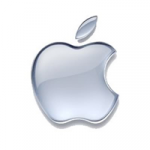 At the beginning of 2012, the gravity-defying rise of Apple (AAPL) was the hot topic of analysts on the street, and hopes that the stock could climb higher and higher led plenty of analysts to give an extremely bullish assessment of the stock. Several analysts were predicting the stock would climb higher and higher, such as Andy Zaky of Bullish Cross, who predicted the stock would climb to $1,000 a share as recently as September 2012. Earlier in 2012, Topeka analyst Brian White also predicted 4-digit stock price for the company.
At the beginning of 2012, the gravity-defying rise of Apple (AAPL) was the hot topic of analysts on the street, and hopes that the stock could climb higher and higher led plenty of analysts to give an extremely bullish assessment of the stock. Several analysts were predicting the stock would climb higher and higher, such as Andy Zaky of Bullish Cross, who predicted the stock would climb to $1,000 a share as recently as September 2012. Earlier in 2012, Topeka analyst Brian White also predicted 4-digit stock price for the company.
So far, these analysts have been wrong. Apple has lost 16.5% since the beginning of January and is actually down slightly on a year-over-year basis as of Friday. 2013 is not starting out well for Apple either – at least not for those who are long the stock for aggressive growth. However, Apple hasn’t been an aggressive growth stock for a long time, and anyone who has been playing it that way has been missing a very important shift in the tech world.
These analysts might have been wrong on the actual stock price, but they were not wrong about Apple being a solid investment despite its falling price. Zolio explains why . . .
From Growth to Maturity: The Dividend Clue
In March 2012, around the time that analysts were releasing price targets of 30% or more of the company’s stock price, Apple announced a dividend. This was the first dividend offered by the company since 1995 and was a tremendous news story both from a financial and a cultural perspective.
Steve Jobs, who died just a few months before the dividend announcement, had been staunchly against the idea of a dividend, and for sound financial reasons: Jobs believed that Apple knew better how to invest that extra cash and get a good return better than any of its individual stockholders, and throughout his lifetime, the reality of Apple’s stock appreciation with him as CEO really proved him right. From 1999 to 2011, it would be almost impossible to make more money with any other investment strategy besides buying and holding Apple.
When Tim Cook announced that the company would give a dividend, he was partly bowing to pressure that the company do something with its $100 billion in cash reserves. The company was so profitable and so rich that its hoard of money was a real problem. $100 billion is roughly the size of Slovakia’s total GDP in 2012. It’s a lot of money.
But the decision was also a tacit acknowledgment that Apple was no longer a growth company. You could see this clearly from the language of Tim Cook’s formal announcement, if you knew what clues to read:
“We have used some of our cash to make great investments in our business through increased research and development, acquisitions, new retail store openings, strategic prepayments and capital expenditures in our supply chain, and building out our infrastructure. Even with these investments, we can maintain a war chest for strategic opportunities and have plenty of cash to run our business. So we are going to initiate a dividend and share repurchase program,” Cook said.
Apple still had plenty of cash left over after maintaining a war chest and all of its investments because it had reached the apex of its growth. It was a matured business whose revenue growth would be less robust in the future.
That’s not to say it wouldn’t remain a phenomenally profitable and successful company, but that the very nature of its market position was changing. It was once a company of tremendous growth and size–that is never infinitely sustainable. One has to give, and for most shareholders, giving up growth is better than giving up size. That’s what happened to Apple.
You could see it clearly in their numbers as early as June 2012, when revenue fell from $39 billion to $35 billion. While that slowed the stock’s appreciation and kept it just below the $600 resistance level for a few weeks, the market’s love for the company kept it invested, and kept the stock rising and rising until it broke $700 and then began the fall as investors realized the appreciation couldn’t last forever in a company whose revenue growth was falling.
Now, Apple is still a great stock to hold for a very different reason. It pays a handsome dividend with a respectable 2.35% yield, and the price is quite low (the P/E is 10.10–tiny for tech, half of GOOG, and a fraction of MSFT). Its dividend is likely to go up soon, and we will probably see the stock have incremental dividend increases over time just like any other utility stock (T, VZ, XOM, CVX).
Because, think about it: these days iPads, iPhones, and Macbooks aren’t really awe-inspiring tech innovations anymore. They get thinner, faster, more impressive, but they are tools. Necessary tools, whether you’re a teen communicating, a businessman analyzing, or a consumer surfing the net. Apple successfully integrated its products into our everyday lives and, for as long as that is the case, it will remain a utility. Smart investors should start trading it as a utility–in fact, that’s what they should’ve been doing for the past year.
